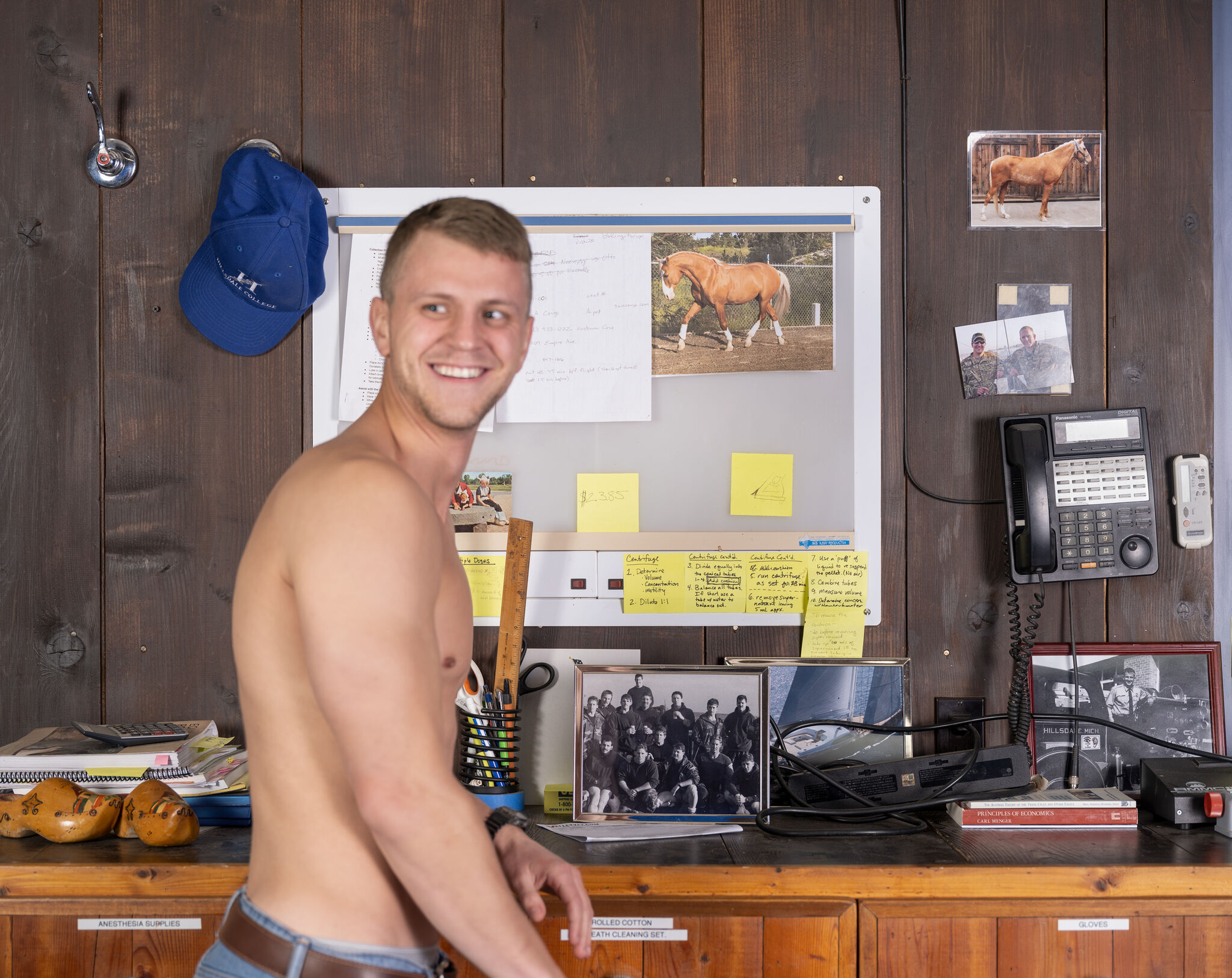Whitney Biennial 2022: Quiet as It’s Kept | Art & Artists
Apr 6–Oct 16, 2022
Whitney Biennial 2022: Quiet as It’s Kept | Art & Artists
Buck Ellison
20
Floor 5
Born 1987 in San Francisco, CA
Lives in Los Angeles, CA
Buck Ellison’s photographs imagine Erik Prince, founder of the private security firm Blackwater, as he might have appeared on his Wyoming ranch in 2003, the year the firm received its first U.S. contracts to engage in the wars in Iraq and Afghanistan. Ellison stages all of his photographs, hiring actors, sourcing props, and carefully researching all his filming locations. “Erik Prince,” Ellison has said, “is often touted in the media as a war criminal, as a political shadow figure, as a monster,” especially following Blackwater’s massacre of seventeen Iraqi civilians in 2007. “I’m interested in what happens when a viewer is forced to get close to a snake in the grass. If a camera allows us to desire, or to be curious, or to feel empathy towards a figure like this.” Ellison explores these questions of desire through the visual language of images commissioned by bank or pharmaceutical companies for marketing purposes.
Fog, In His Light We Shall See The Light, Raintree 23 Ltd Ptnr, Excess Distribution Carryover, If Any, 2003, 2021
-
0:00
Buck Ellison, Rain in Rifle Season, Distributions from Split-Interest Trusts, Price Includes Uniform, Never Hit Soft
0:00
Narrator: These photographs by Buck Ellison take as their subject the real-life figure Erik Prince, reimagined as he might have been around the start of the war in Afghanistan.
Buck Ellison: The project’s focuses on Erik Prince at exactly my age, thirty-four years old, on his ranch near Cody, Wyoming. And it’s set in 2003.
Erik Prince co-founded the security and mercenary firm Blackwater. The company received widespread notoriety in 2007 when a group of its employees killed seventeen Iraqi civilians in the Nisour square in Baghdad.
Erik Prince is often touted in the media as a war criminal, as a shadow figure in politics, as a monster. And yet, I think with all my work about these real figures, I’m sort of interested in like if a camera allows us to even desire, or be curious, or feel empathy towards a figure like that.
When Erik was thirty-four, he had just gotten his first contract from the Bush administration. It started out with just sort of covert CIA stuff, and then, it really ballooned into, towards the end of the war, he had received billions and dollars of contracts to send men to Iraq, to fight on behalf of our government.
His business was exploding. And then, also, his wife had passed away of cancer the year before. So, he had three young children, and I thought, oh, on a really basic human level, that is difficult for anyone. People, they’re complicated, but I thought this would be an interesting time to come in and look at Erik.
My work on Erik Prince is based a lot on research. This In particular I drew from his book, Civilian Warriors and autobiography of sorts that he wrote to sort of clear his name—that I’ve read a punishing amount of times.
It was all filmed in California using actors, and yet, California, as it often does, is playing Wyoming. So, we shot on two separate ranches.
I’ve done research, but I just wanted to make sure, always, that these things are really authentic. That, for me, is always the goal is less to critique something and more to recreate something with so much precision that it has to be taken seriously.

